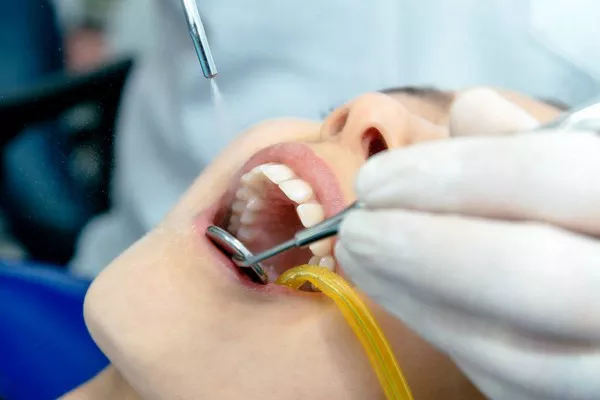Temporary fillings are commonly used in dentistry to provide short-term protection and relief for a tooth while awaiting permanent restoration. These fillings serve as a temporary solution until a more permanent restoration, such as a dental crown or permanent filling, can be placed. While temporary fillings are designed to be temporary, their lifespan can vary depending on several factors. In this article, we will explore the durability of temporary fillings and provide insights into how long they can typically last.
Understanding Temporary Fillings
Temporary fillings, also known as provisional or interim fillings, are typically made of a soft, pliable material such as dental cement or composite resin. They are intended to provide temporary protection for a tooth that has undergone dental treatment, such as a root canal or cavity preparation, until a permanent restoration can be placed. Temporary fillings are designed to seal off the tooth and prevent further damage or infection while maintaining functionality and comfort.
Factors Affecting the Lifespan of Temporary Fillings
Material Composition:
The type of material used for the temporary filling can significantly impact its durability. Temporary fillings made of dental cement or composite resin tend to be more durable and longer-lasting compared to other materials. These materials provide better sealing properties and can withstand chewing forces better, prolonging the lifespan of the temporary filling.
Location of the Filling:
The location of the temporary filling within the mouth can also affect its longevity. Temporary fillings placed on molars or teeth used for chewing may experience more wear and tear due to the forces of chewing and grinding. As a result, temporary fillings in these areas may wear out more quickly compared to those placed on front teeth or non-chewing surfaces.
Extent of Damage or Decay:
The extent of damage or decay in the tooth can impact the lifespan of a temporary filling. Teeth with extensive decay or damage may require more extensive treatment and may not be suitable for temporary fillings. In such cases, the temporary filling may need to be replaced sooner to ensure the tooth’s protection and integrity.
Oral Hygiene and Care:
Proper oral hygiene and care can also affect the lifespan of a temporary filling. Maintaining good oral hygiene practices, such as brushing and flossing regularly and avoiding hard or sticky foods, can help prolong the life of the temporary filling. Poor oral hygiene can lead to bacterial growth and decay around the filling, necessitating its replacement.
Patient Compliance:
Patient compliance with post-treatment instructions provided by the dentist can play a role in the longevity of a temporary filling. Patients are typically advised to avoid certain foods or activities that may dislodge or damage the temporary filling, such as chewing on hard objects or consuming sticky foods. Following these recommendations can help prevent premature failure of the temporary filling.
Typical Lifespan of Temporary Fillings
The lifespan of a temporary filling can vary depending on the factors mentioned above. In general, temporary fillings are designed to last for a few weeks to several months, providing temporary protection and relief until a permanent restoration can be placed. However, it is essential to keep in mind that temporary fillings are not intended to be long-term solutions and may need to be replaced sooner if they become dislodged, damaged, or decayed.
Signs That a Temporary Filling Needs Replacement
Discomfort or Pain:
If you experience pain or discomfort around the temporary filling, it may indicate that the filling has become dislodged or damaged, exposing the underlying tooth structure. In such cases, prompt replacement of the temporary filling is necessary to prevent further damage or infection.
Visible Wear or Damage:
Inspect the temporary filling regularly for signs of wear, damage, or decay. If you notice any cracks, chips, or deterioration in the filling material, it may be time to have it replaced by your dentist.
Sensitivity to Temperature or Pressure:
Sensitivity to hot, cold, or pressure around the tooth with the temporary filling may indicate underlying issues with the filling or tooth. Consult your dentist if you experience persistent sensitivity or discomfort for proper evaluation and treatment.
Looseness or Dislodgement:
If the temporary filling becomes loose or dislodged, it is essential to seek dental attention promptly. Leaving the tooth unprotected can increase the risk of further damage or infection and may compromise the success of future treatment.
Conclusion
Temporary fillings serve as a temporary solution to protect and preserve a tooth while awaiting permanent restoration. While they are designed to be temporary, the lifespan of a temporary filling can vary depending on factors such as material composition, location of the filling, extent of damage or decay, oral hygiene and care, and patient compliance. It is essential to monitor the temporary filling for signs of wear, damage, or discomfort and seek prompt dental attention if any issues arise. By understanding the factors affecting the durability of temporary fillings and practicing good oral hygiene, patients can help ensure the success of their dental treatment and maintain optimal oral health.
How long does a cavity filling take to heal?
Can Fillings Make Your Teeth Sensitive






























